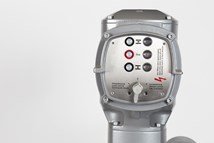Alléo Energy Unveils Carbon-Negative Green Hydrogen System
Bay Minette plant produces green hydrogen at commercial scale.
Alléo Energy, a pioneer in sustainable energy solutions, announced a cellulose-to-hydrogen process yielding over one hundred kilograms of hydrogen per ton of cellulosic waste. Alléo’s proprietary process converts cellulosic waste into abundant carbon-negative green hydrogen, capable of achieving negative Carbon Intensity (CI) scores that surpass competing approaches. By transforming this waste into clean energy, Alléo is poised to contribute a significant step forward for the global hydrogen market, valued at $280 billion in 2025 and projected to grow at a CAGR of 9.3% through 2030.
The renewable energy requirement of the Alléo process is less than 63% of the benchmark established by water electrolysis. This efficiency enables production costs well below competing initiatives, making Alléo green H2 scalable, safe, and reliable for widespread adoption. Alléo has achieved this production in a commercial-scale reactor under multiday operations. Alléo intends to sequester 6 kg CO2 for every kg of hydrogen produced: Alléo-produced H2 will result in a six-fold reduction in greenhouse gas emissions.
Alléo's Bay Minette facility in Alabama, operational since 2023, has proven its reforming technology on a commercial scale. The first reactor achieved nameplate production in Q1 2023 in liquid fuels focused operations and commissioned a second reactor in Q1 2025 demonstrating scalability, yield, safety, and reliability in multi-day continuous operations.
For more information, visit www.alleoenergy.com.

Alléo cellulosic waste to hydrogen conversion facility.
Source: Alléo Energy
RELATED CONTENT
-
The Diverse Role Valves Play in the Chemical Industry
The chemical industry is extremely diverse with more than 60,000 known products. Like all process industries, the chemical industry needs valves designed for safe, efficient and reliable process operation.
-
Proper Care of Knife Gate and Slurry Valves
How to resolve—and avoid—field failures of knife gate and slurry valves
-
New Requirements for Actuator Sizing
After decades of confusion, the American Water Works Association has created new standards for actuator sizing that clear up some of the confusion and also provide guidance on where safety factors need to be applied.










 Unloading large gate valve.jpg;maxWidth=214)